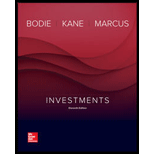
(A)
Adequate information:
Cost of goods sold - $2850000
Opening inventory - $480000
Closing inventory - $490000
To calculate inventory turnover ratio
Introduction:
Inventory turnover ratio is a turnover ratio which shows how inventory is managed by dividing cost of goods sold by average inventory. It measures the number of times a company sold its average inventory during a year.
Explanation of Solution
Calculation of Inventory turnover ratio
The inventory turnover ratio of Heifer Sports Inc. is 5.87 times.
(B)
Adequate information:
Shareholder's equity - $960000
Total Liabilities=
Introduction:
The debt-equity ratio is a financial ratio which measures the financial health of the company. It shows relative contribution of capital by creditors with the contribution by equity shareholders.
Explanation of Solution
Calculation of Debt-Equity ratio
The debt-equity ratio of Heifer Sports Inc. is 3.48.
(C)
Adequate information:
Net Income - $410000
Accounts receivables for year ending 2014 - $690000
Accounts receivables for year ending 2015 - $660000
Inventory for year ending 2014 - $480000
Inventory for year ending 2015 - $490000
Accounts payable for year ending 2014 - $450000
Accounts payable for year ending 2015 - $340000
Introduction:
The statement of cash flows shows cash flow from operations is adequate for dividend payments at sustainable levels. It is an evidence for well being of the company.
It is denoted as Net income (including
Explanation of Solution
Statement of cash flow from operating activities
| Particulars | Amount (In $) |
| Net Income
Changes in accounts receivable ($690000 - $660000) Changes in inventories ($480000 - $490000) Changes in accounts payable ($450000 - $340000) |
410000
30000 (10000) 110000 |
| Cash Flow from Operating Activities | 540000 |
The cash flow from operating activities for Heifer Sports Inc. is $540000
(D)
Adequate information:
Sales - $5500000
Accounts receivables for year ending 2014 - $690000
Accounts receivables for year ending 2015 - $660000
Introduction:
The average collection period is the average time lag for a business between the date of sale and the date of payment owed in terms of accounts receivables. It is expressed as:
Average collection period = 365 / receivables turnover ratio
Where receivable turnover ratio = Net credit sales / average accounts receivables
Explanation of Solution
Now Average collection period
The average collection period for Heifer Sports Inc. is 45 days approximately.
(E)
Adequate information:
Sales - $5500000
Total assets for year ending 2014 - $4010000
Total assets for year ending 2015 - $4300000
Introduction:
Assets turnover ratio is a financial ratio which measures the ability of the firm to generate sales from its total assets. It is denoted as Net sales / average total assets.
Explanation of Solution
The assets turnover ratio for Heifer Sports Inc. is 1.32 times.
(F)
Adequate information:
EBIT or Earnings before interest and taxes - $870000
Interest expense - $130000
Introduction:
Interest coverage ratio is a profitability ratio which determines the ability of the company to pay interest on its outstanding debt. It is calculated by dividing earnings before interest and taxes by interest expense.
Explanation of Solution
The interest coverage ratio for Heifer Sports Inc. is 6.7 times.
(G)
Adequate information:
EBIT or Earnings before interest and taxes - $870000
Sales - $5500000
Introduction:
Operating profit margin measures the profit a company makes on sales after paying for variable cost of production but before paying interest and taxes. It is calculated by dividing a company's operating profit by its net sales.
Explanation of Solution
The operating profit margin for Heifer Sports Inc. is 16%.
(H)
Adequate information:
Net Income - $410000
Shareholder's equity - $960000 Introduction: It measures the financial performance of the company by focusing only on the profitability of equity investments. It is expressed as:
Explanation of Solution
Calculation of
The return on equity for Heifer Sports Inc. is 43%.
(I)
Adequate information:
Assets - $4300000
Equity - $960000
EBIT or Earnings before interest and taxes - $870000
Interest expense - $130000
Introduction:
Compound leverage factor is denoted as interest coverage X leverage ratio where
Leverage ratio = Assets Debt
_______ = 1 +_______
Equity Equity
Explanation of Solution
Calculation of leverage ratio
Leverage ratio = Assets/ equity
Compound leverage ratio = interest coverage ratio * leverage ratio
(J)
Adequate information:
Net Income - $410000
Accounts receivables for year ending 2014 - $690000
Accounts receivables for year ending 2015 - $660000
Inventory for year ending 2014 - $480000
Inventory for year ending 2015 - $490000
Accounts payable for year ending 2014 - $450000
Accounts payable for year ending 2015 - $340000
Introduction:
The statement of cash flows shows cash flow from operations is adequate for dividend payments at sustainable levels. It is an evidence for well being of the company.
It is denoted as Net income(including depreciation & amortization) + Changes in working capital.
Explanation of Solution
Statement of cashflow from operatingactivities
The net cash provided by operating activities for Heifer Sports Inc. is $540000
Want to see more full solutions like this?
Chapter 19 Solutions
Investments
- Take value of 1.01^-36=0.699 . step by steparrow_forwardsolve this question.Pat and Chris have identical interest-bearing bank accounts that pay them $15 interest per year. Pat leaves the $15 in the account each year, while Chris takes the $15 home to a jar and never spends any of it. After five years, who has more money?arrow_forwardWhat is corporate finance? explain all thingsarrow_forward
 Financial Accounting: The Impact on Decision Make...AccountingISBN:9781305654174Author:Gary A. Porter, Curtis L. NortonPublisher:Cengage Learning
Financial Accounting: The Impact on Decision Make...AccountingISBN:9781305654174Author:Gary A. Porter, Curtis L. NortonPublisher:Cengage Learning Cornerstones of Financial AccountingAccountingISBN:9781337690881Author:Jay Rich, Jeff JonesPublisher:Cengage Learning
Cornerstones of Financial AccountingAccountingISBN:9781337690881Author:Jay Rich, Jeff JonesPublisher:Cengage Learning Financial AccountingAccountingISBN:9781337272124Author:Carl Warren, James M. Reeve, Jonathan DuchacPublisher:Cengage Learning
Financial AccountingAccountingISBN:9781337272124Author:Carl Warren, James M. Reeve, Jonathan DuchacPublisher:Cengage Learning EBK CONTEMPORARY FINANCIAL MANAGEMENTFinanceISBN:9781337514835Author:MOYERPublisher:CENGAGE LEARNING - CONSIGNMENT
EBK CONTEMPORARY FINANCIAL MANAGEMENTFinanceISBN:9781337514835Author:MOYERPublisher:CENGAGE LEARNING - CONSIGNMENT




